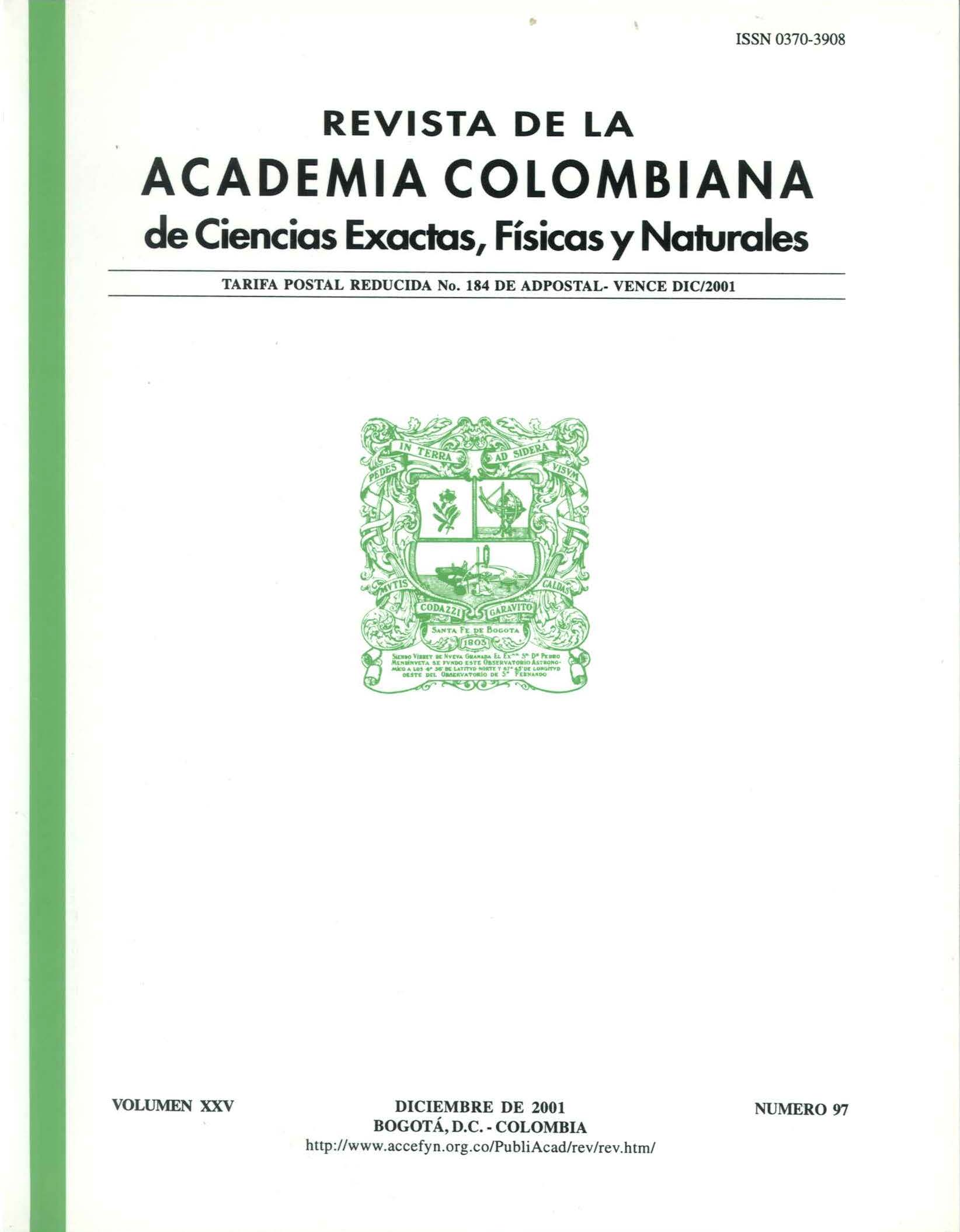Resumen
Se presenta una descripción detallada de la solución analítica propuesta por Damour & Deruelle (D&D) para resolver la ecuación diferencial que describe el problema de los dos cuerpos postnewtoniano. Se muestra la relación entre las constantes de movimiento y los denominados elementos orbitales postnewtonianos, los cuales se reducen a los elementos clásicos al tomar c ➔ ∞. Con el fin de verificar el grado de exactitud de la solución, se estudia el sistema conformado por Mercurio alrededor del Sol. Los resultados se han comparado con los obtenidos a través de una integración numérica directa de las ecuaciones de movimiento. Se encuentra que la solución analítica de D&D describe con un alto grado de exactitud el movimiento del Mercurio comparado con los resultados de la integración numérica directa de las ecuaciones diferenciales.
Referencias
Brouwer, D., Clemence, G. 1961. Methods of Celestial Mechanics, Academic Press, New York.
Brumberg, V. 1991. Essential Relativistic Celestial Mechanics. Adam Hilger, Bristol.
Calura, M., Fortini, P., Montanari, E. 1997. Post-Newtonian Lagrangian Planetary Equations. Phys. Review D, 56: 4782-4788.
Damour, T. 1987. The Problem of Motion in Newtonian and Einstein Gravity, en Three Hundred Years of Gravitation, Hawking S. y Israel W. (eds.) Cambridge University Press, Cambridge.
Damour, T., Deruelle, N. 1985. General Relativistic Celestial Mechanics I. The post-Newtonian Motion. Ann. Inst. Henri Poincaré, 43: 107-132.
Everhart, E. 1985. An Efficient Integrator that Uses Gauss-Radau Spacings, en Dynamics of Comets, Their Origin and Evolution, Carusi and Valsecchi (eds.), Reidel Pub. Co., 185-202.
Haugan, M. 1985. Post-Newtonian Arrival-Time Analysis for a Pulsar in a Binary System. Ap. J. 296: 1-12.
Lestrade, J.F. 1981. Perturbations relativistes des orbites planétaires dans la métrique de Schwarzschild généralisée à trois paramètres. Cas de Mercure. Astron. Astrophys. 100: 143-155.
Portilla J.G. 2001. Elementos de astronomía de posición, Unibiblos, Bogotá.
Richardson, D.L., Kelly, T.J. 1988. Two-Body Motion in the Post-Newtonian Approximation. Cel. Mech., 43: 193-210.
Rubincam, D.P. 1977. General Relativity and Satellite Orbits: the Motion of a Test Particle in the Schwarzschild Metric. Cel. Mech. 15: 21-33.
Soffel, M., Ruder, H., Schneider, M. 1987. The Two Body Problem in the (Truncated) PPN-Theory. Cel. Mech. 40: 77-85.
Soffel, M. 1989. Relativity in Astrometry, Celestial Mechanics and Geodesy, Springer-Verlag, Heidelberg.
Taylor, J.H., Weisberg, J.M. 1989. Further Experimental Tests of Relativistic Gravity Using the Binary Pulsar PSR 1913 + 16. Ap. J. 345: 434-450.
Wagoner, R., Will, C. 1976. Post-Newtonian Gravitational Radiation from Orbiting Point Masses. Ap. J. 210: 764-775.

Esta obra está bajo una licencia internacional Creative Commons Atribución-NoComercial-SinDerivadas 4.0.

